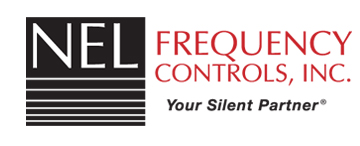Bio-lubricants Market Status and Trend Analysis 2017-2026
- Report Code : 99S2204712
- Published On: Dec, 2020
- Category : Chemicals & Materials
- Pages : 155
-
Further key aspects of the report indicate that:
Chapter 1: Research Scope: Product Definition, Type, End-Use & Methodology
Chapter 2: Global Industry
Chapter 3: Market Dynamics
Chapter 4: Global Market Segmentation by region, type and End-Use
Chapter 5: North America Market Segmentation by region, type and End-Use
Chapter 6: Europe Market Segmentation by region, type and End-Use
Chapter 7: Asia-Pacific Market Segmentation by region, type and End-Use
Chapter 8: South America Market Segmentation by region, type and End-Use
Chapter 9: Middle East and Africa Market Segmentation by region, type and End-Use.
Chapter 10: Market Competition by Companies
Chapter 11: Market forecast and environment forecast.
Chapter 12: Industry .
The global Bio-lubricants market has the potential to grow with xx million USD with growing CAGR in the forecast period from 2021f to 2026f.
Based on the type of product, the global Bio-lubricants market segmented into
Plant-based
Animal-based
Based on the end-use, the global Bio-lubricants market classified into
Car
Ship
Aircraft
Mechanical
Others
Based on geography, the global Bio-lubricants market segmented into
North America [U.S., Canada, Mexico]
Europe [Germany, UK, France, Italy, Rest of Europe]
Asia-Pacific [China, India, Japan, South Korea, Southeast Asia, Australia, Rest of Asia Pacific]
South America [Brazil, Argentina, Rest of Latin America]
Middle East & Africa [GCC, North Africa, South Africa, Rest of Middle East and Africa]
And the major players included in the report are
Castrol
Solar Lubricants
Houghton PlC
Aztec Oils
Ironsides Lubricants
Albemarle
Chevron
Fuchs Petrolub
Exol Lubricants
Total
Selenia
Carl Bechem
Intech Energy systems
Kajo Chemie
GB Lubricants
Biocorp
Morris
Maryn International
Renewable Lubricants
Smart Earth Lubricants
The Hill and Griffith
Gemtek Products
Clarion Lubricants
Environmental Lubricants
-
With tables and figures helping analyze worldwide Bio lubricants market, this research provides key statistics on the state of the industry and is a valuable source of guidance and direction for companies and individuals interested in the market.
1 RESEARCH SCOPE1.1 Research Product Definition
1.2 Research Segmentation
1.2.1 Product Type
1.2.2 Main product Type of Major Players1.3 Demand Overview
1.4 Research Methodology
2 GLOBAL BIO-LUBRICANTS INDUSTRY2.1 Summary about Bio-lubricants Industry
2.2 Bio-lubricants Market Trends
2.2.1 Bio-lubricants Production & Consumption Trends
2.2.2 Bio-lubricants Demand Structure Trends2.3 Bio-lubricants Cost & Price
3 MARKET DYNAMICS3.1 Manufacturing & Purchasing Behavior in 2020
3.2 Market Development under the Impact of COVID-19
3.2.1 Drivers
3.2.2 Restraints
3.2.3 Opportunity
3.2.4 Risk
4 GLOBAL MARKET SEGMENTATION4.1 Region Segmentation (2017 to 2021f)
4.1.1 North America (U.S., Canada and Mexico)
4.1.2 Europe (Germany, UK, France, Italy, Rest of Europe)
4.1.3 Asia-Pacific (China, India, Japan, South Korea, Southeast Asia, Australia, Rest of Asia Pacific)
4.1.4 South America (Brazil,, Argentina, Rest of Latin America)
4.1.5 Middle East and Africa (GCC, North Africa, South Africa, Rest of Middle East and Africa)4.2 Product Type Segmentation (2017 to 2021f)
4.2.1 Plant-based
4.2.2 Animal-based4.3 Consumption Segmentation (2017 to 2021f)
4.3.1 Car
4.3.2 Ship
4.3.3 Aircraft
4.3.4 Mechanical
4.3.5 Others
5 NORTH AMERICA MARKET SEGMENT5.1 Region Segmentation (2017 to 2021f)
5.1.1 U.S.
5.1.2 Canada
5.1.3 Mexico5.2 Product Type Segmentation (2017 to 2021f)
5.2.1 Plant-based
5.2.2 Animal-based5.3 Consumption Segmentation (2017 to 2021f)
5.3.1 Car
5.3.2 Ship
5.3.3 Aircraft
5.3.4 Mechanical
5.3.5 Others5.4 Impact of COVID-19 in North America
6 EUROPE MARKET SEGMENTATION6.1 Region Segmentation (2017 to 2021f)
6.1.1 Germany
6.1.2 UK
6.1.3 France
6.1.4 Italy
6.1.5 Rest of Europe6.2 Product Type Segmentation (2017 to 2021f)
6.2.1 Plant-based
6.2.2 Animal-based6.3 Consumption Segmentation (2017 to 2021f)
6.3.1 Car
6.3.2 Ship
6.3.3 Aircraft
6.3.4 Mechanical
6.3.5 Others6.4 Impact of COVID-19 in Europe
7 ASIA-PACIFIC MARKET SEGMENTATION7.1 Region Segmentation (2017 to 2021f)
7.1.1 China
7.1.2 India
7.1.3 Japan
7.1.4 South Korea
7.1.5 Southeast Asia
7.1.6 Australia
7.1.7 Rest of Asia Pacific7.2 Product Type Segmentation (2017 to 2021f)
7.2.1 Plant-based
7.2.2 Animal-based7.3 Consumption Segmentation (2017 to 2021f)
7.3.1 Car
7.3.2 Ship
7.3.3 Aircraft
7.3.4 Mechanical
7.3.5 Others7.4 Impact of COVID-19 in Europe
8 SOUTH AMERICA MARKET SEGMENTATION8.1 Region Segmentation (2017 to 2021f)
8.1.1 Brazil
8.1.2 Argentina
8.1.3 Rest of Latin America8.2 Product Type Segmentation (2017 to 2021f)
8.2.1 Plant-based
8.2.2 Animal-based8.3 Consumption Segmentation (2017 to 2021f)
8.3.1 Car
8.3.2 Ship
8.3.3 Aircraft
8.3.4 Mechanical
8.3.5 Others8.4 Impact of COVID-19 in Europe
9 MIDDLE EAST AND AFRICA MARKET SEGMENTATION9.1 Region Segmentation (2017 to 2021f)
9.1.1 GCC
9.1.2 North Africa
9.1.3 South Africa
9.1.4 Rest of Middle East and Africa9.2 Product Type Segmentation (2017 to 2021f)
9.2.1 Plant-based
9.2.2 Animal-based9.3 Consumption Segmentation (2017 to 2021f)
9.3.1 Car
9.3.2 Ship
9.3.3 Aircraft
9.3.4 Mechanical
9.3.5 Others9.4 Impact of COVID-19 in Europe
10 COMPETITION OF MAJOR PLAYERS10.1 Brief Introduction of Major Players
10.1.1 Castrol
10.1.2 Solar Lubricants
10.1.3 Houghton PlC
10.1.4 Aztec Oils
10.1.5 Ironsides Lubricants
10.1.6 Albemarle
10.1.7 Chevron
10.1.8 Fuchs Petrolub
10.1.9 Exol Lubricants
10.1.10 Total
10.1.11 Selenia
10.1.12 Carl Bechem
10.1.13 Intech Energy systems
10.1.14 Kajo Chemie
10.1.15 GB Lubricants
10.1.16 Biocorp
10.1.17 Morris
10.1.18 Maryn International
10.1.19 Renewable Lubricants
10.1.20 Smart Earth Lubricants
10.1.21 The Hill and Griffith
10.1.22 Gemtek Products
10.1.23 Clarion Lubricants
10.1.24 Environmental Lubricants10.2 Bio-lubricants Sales Date of Major Players (2017-2020e)
10.2.1 Castrol
10.2.2 Solar Lubricants
10.2.3 Houghton PlC
10.2.4 Aztec Oils
10.2.5 Ironsides Lubricants
10.2.6 Albemarle
10.2.7 Chevron
10.2.8 Fuchs Petrolub
10.2.9 Exol Lubricants
10.2.10 Total
10.2.11 Selenia
10.2.12 Carl Bechem
10.2.13 Intech Energy systems
10.2.14 Kajo Chemie
10.2.15 GB Lubricants
10.2.16 Biocorp
10.2.17 Morris
10.2.18 Maryn International
10.2.19 Renewable Lubricants
10.2.20 Smart Earth Lubricants
10.2.21 The Hill and Griffith
10.2.22 Gemtek Products
10.2.23 Clarion Lubricants
10.2.24 Environmental Lubricants10.3 Market Distribution of Major Players
10.4 Global Competition Segmentation
11 MARKET FORECAST11.1 Forecast by Region
11.2 Forecast by Demand
11.3 Environment Forecast
11.3.1 Impact of COVID-19
11.3.2 Geopolitics Overview
11.3.3 Economic Overview of Major Countries
12 REPORT SUMMARY STATEMENT
-
The Bio lubricants Market has been segregated into various crucial divisions including applications, types, and regions. Each market segment is intensively studied in the report contemplating its market acceptance, worthiness, demand, and growth prospects. The segmentation analysis will help the client to customize their marketing approach to have a better command of each segment and to identify the most prospective customer base.
Report Objectives / Segmentation Covered :
By Companies / players:
By Regions:
By Type:
By Application:
Frequently asked questions(FAQ's):
A large number of Global Bio lubricants players are focusing on individualized and innovative technologies that will provide the necessary impetus for profit and growth in the coming years.
From 2025 to 2030, the Bio lubricants Market is expected to grow at a compound annual growth rate of YY%, reaching a value of USD XXX Million.
The influx of capital into the Bio lubricants Market, as well as the deployment of technologies designed to increase efficiency and yield high volume, are paving the way for promising market opportunities.
The latest version of the Bio lubricants Market study includes a market size breakdown by relevant business segments, applications, and geography, as well as qualitative insights such as Patent Analysis*, Market Entropy, Key Development Activities, Market Dynamics, PEST and PORTER models, and more.















